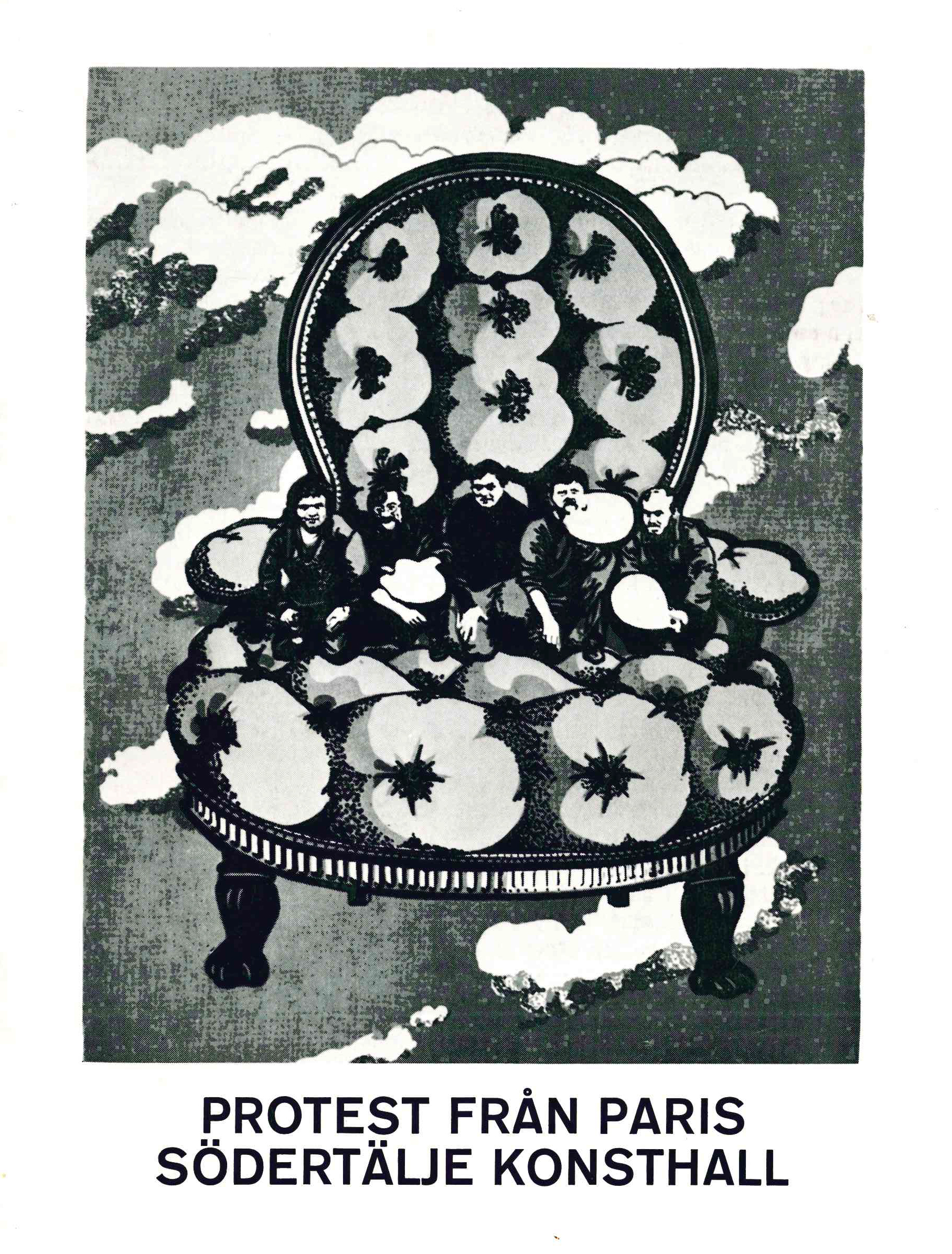
Södertälje konsthall
Exhibitions
1973
Protest from Paris
Group exhibition
Protest from Paris
Group exhibition
Protest from Paris
Group exhibition
Protest from Paris
Group exhibition
Protest from Paris
Group exhibition
Protest from Paris
Group exhibition
Protest from Paris
Group exhibition
Exhibitions
1973
Protest from Paris
Group exhibition

Ur arkivet, visades
14/04 – 06/05, 1973
Paris has during the centuries been the “aesthetic” art’s metropole. Had an artist received the label of belonging to the Paris school (École de Paris), everyone knew, not least the collectors, that the art was salon ready. The myth that this Paris still plays a leading role in the art world is something many galleries make a forced effort to maintain.
But there is also a vital and current face of Paris’ art scene, which is less often shown abroad. It represents the young, for society often “uncomfortable”, protest art that wants to spark debate. Such protest groups have in their way contributed to laying the ground for the student revolt in Paris in May 1968, and they got their breakthrough through this “revolution” that called for a re-evaluation of the artist’s role.
The artists Cueco, Fleury, Latil, Parré and Tisserand, together Coopérative des Malassis, have collectively produced several noted and debated thematic exhibitions. Lunds konsthall and Södertälje konsthall are showing two of them, “NIGHTMARE APARTMENT” and “12 YEARS OF FRENCH HISTORY”.
“I APPARTEMENSONGE”, is here freely translated into Swedish as “(MAR)-DRÖM-VÅNINGEN” (“NIGHTMARE APARTMENT”). It references French circumstances of course, but the same issues exist also in Sweden. They who wander through the rooms of the “apartment” will certainly recognise the “life style” that the exhibition opposes.
The cooperative’s latest and most written about exhibition is “12 YEARS OF FRENCH HISTORY”, a series of paintings that form a cohesive frieze. It was made as an oppositional contribution to the so-called Pompidou exhibition, an exhibition arranged by the state that opened in August 1972 at the Grand Palais in Paris. The theme for this exhibition was 12 years of French art, 1960–1972. At the opening a fight erupted, the police intervened and many artists, among them Coopérative de Malassis, removed their works in protest. In Paris, Malassis called their frieze “Le GRAND MECHOUI”, translated into Swedish as “DEN STORA FÅRSLAKTNINGSFESTEN” (“THE GRAND SHEEP SLAUGHTER FEAST”). As this name suggests, the content has partly received the animal disguise of the fable.
Protest art fills an important function and holds a prominent place in the current art situation. Across borders it has as its common denominator the absolute freedom to express yourself and the often hard fight to win and keep this right.
Marianne Nanne-Bråhammar
Curator at Lunds konsthall